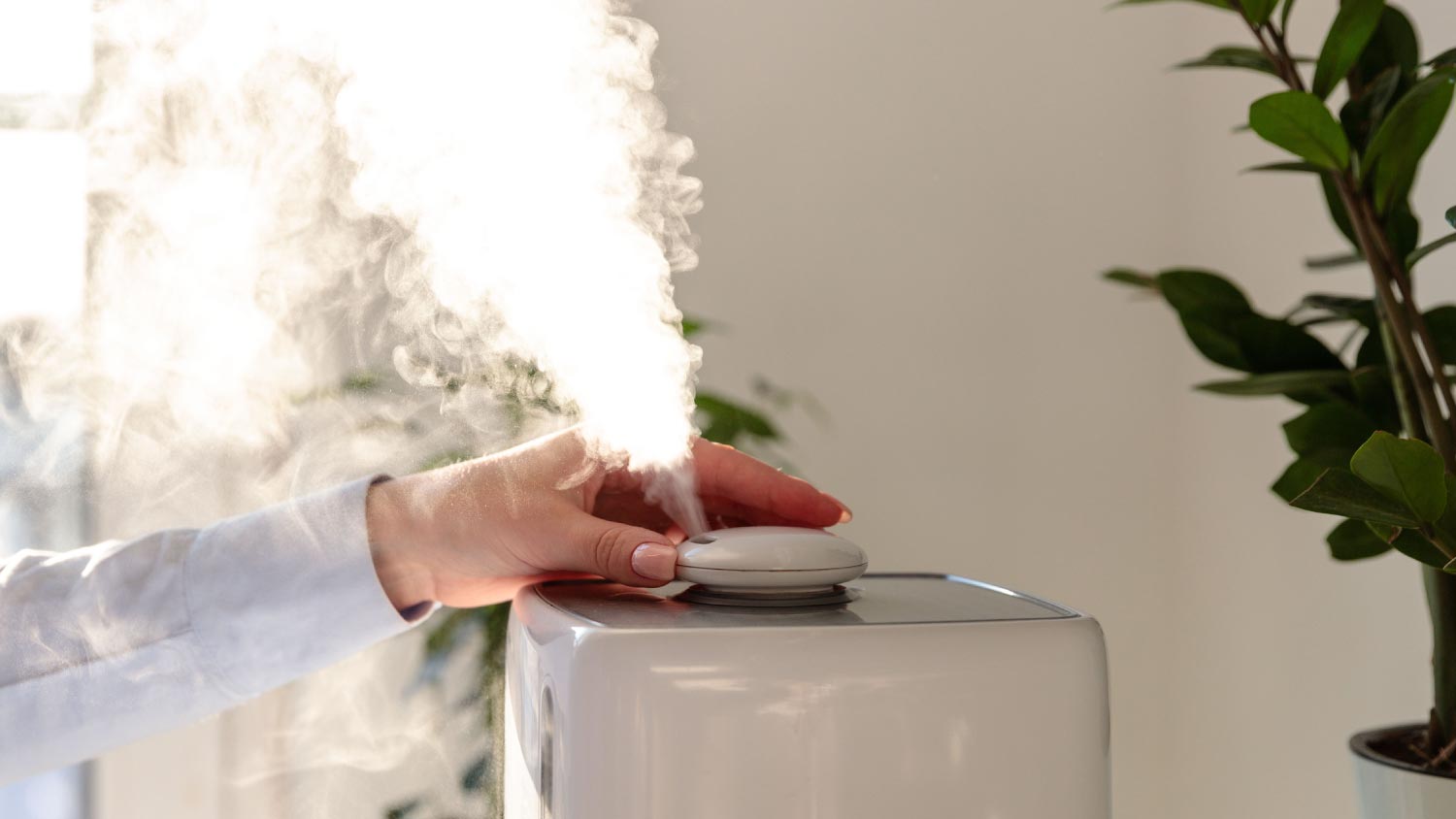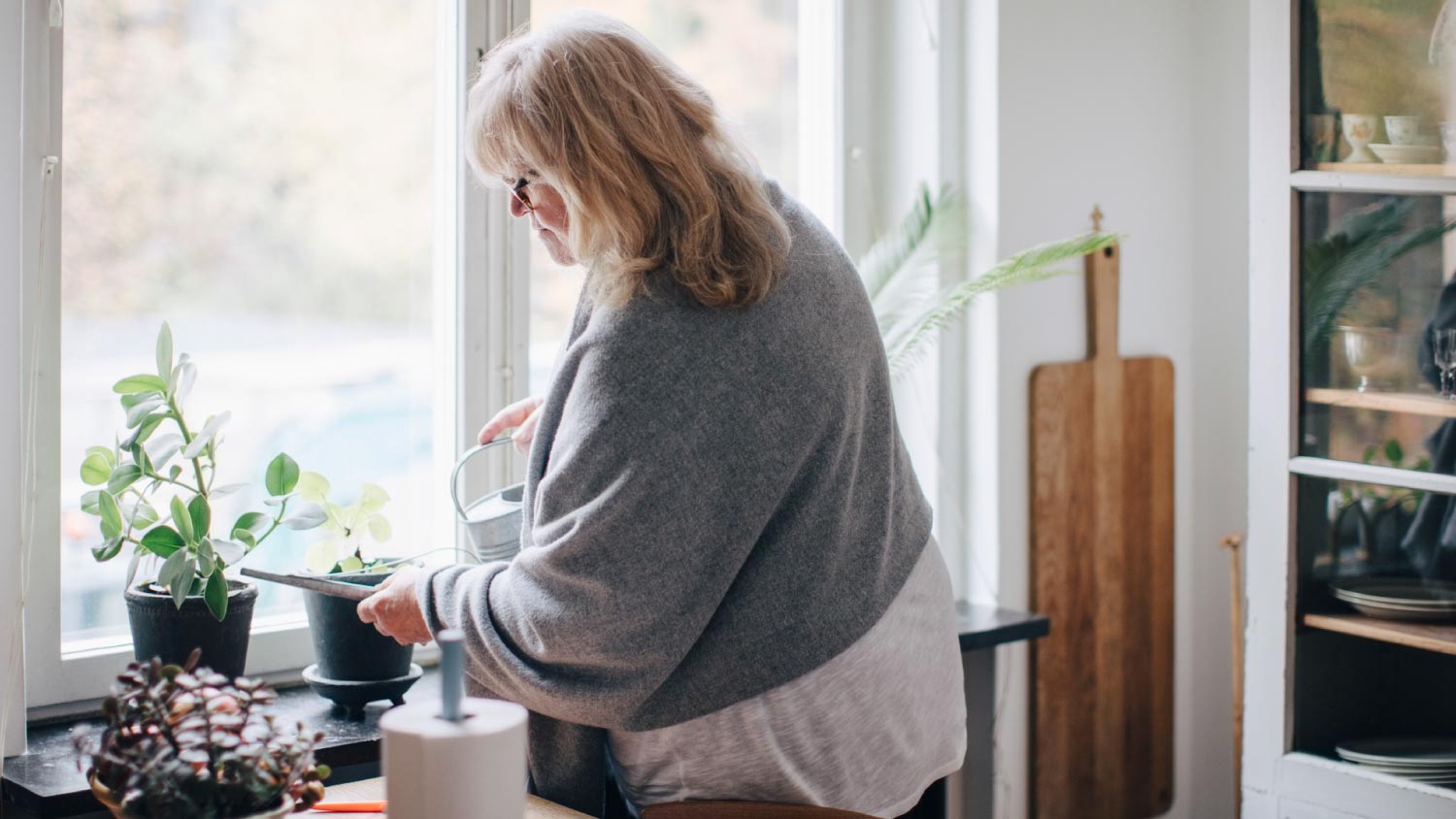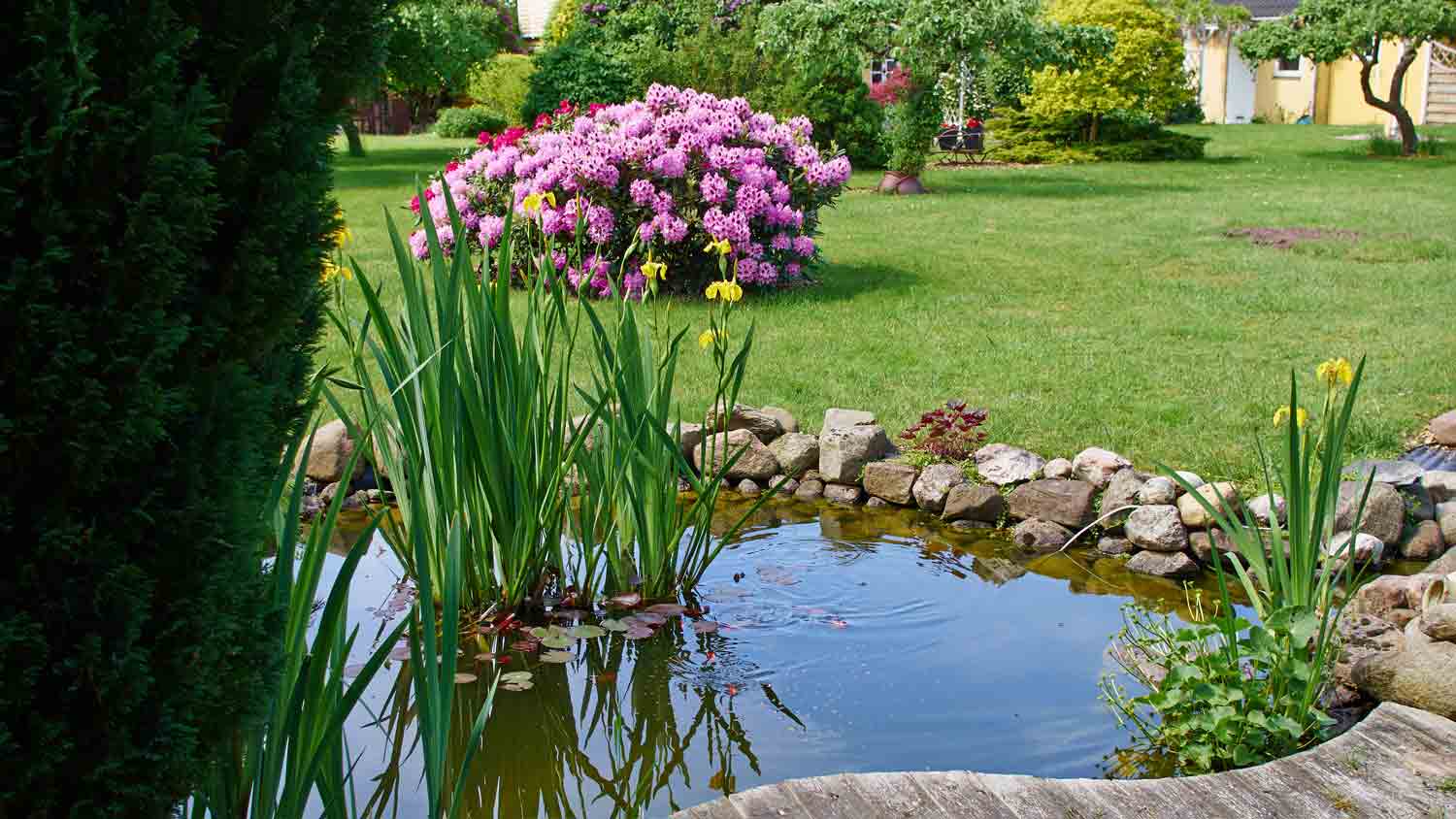
Ivy might look pretty, but you probably don’t want it in your garden. Learn how much it’ll cost to remove ivy by type, treatment method, and more.
Be kind to your leafy green friends this winter


Despite their climate-controlled environment, your indoor plants are still vulnerable when it gets cold outside. Drier air and plunging humidity levels can take a toll, so proper TLC is crucial. Here are our 10 best tips for weathering the winter with your potted pals.
Jack Frost can nip your indoor plants in the bud if you’re not careful. Avoid drafty doorways and keep plants at least three inches away from window glass. If your windows aren’t well-insulated, wrap them in clear shrinkwrap (you can find kits at your local big-box retailer or hardware store). Since you still want the plants to soak up the valuable sunshine, this beats relocating them to avoid the draft.
Sunlight is a much rarer commodity in the winter—not only are there fewer daylight hours, but the rays come in at a lower angle and aren’t as intense. You may need to relocate your pots to a sunnier location if possible. Ideally, your sun-loving plants should go near a window that faces west or south.
If your plants aren’t getting enough light, then you may need to supplement with a grow light. Keep in mind that grow lights aren’t as intense as regular sunlight. Most plants will require at least 12 to 14 hours of light, though this will vary based on shade tolerance and your grow light’s intensity.
Even when your plants are inside, they’re still vulnerable to low temperatures. Try not to let the thermostat drop below 65 degrees Fahrenheit, even if you’re going out of town. Although most indoor plants are hardy enough to take temperatures as low as 50 degrees Fahrenheit, most will need a warmer climate in order to thrive. Keep in mind that your thermostat most accurately measures the room it’s located in, so it’s best to err on the side of warmer if your plants are on the other end of the house.
Just as cold temperatures can stress out your plants, heat can do a number on them as well. Generally, anything higher than 75 degrees Fahrenheit is a danger zone. This means you’ll need to keep them away from:
Fireplaces
Stoves
Radiators
Furnaces
Space heaters
Any other sources of extreme heat

A major health benefit of indoor plants is their ability to humidify your home, but they need extra help during the winter months. A room humidifier can make a big difference, or you can get in touch with a local HVAC pro to install a whole-house humidifier.
You can also naturally boost your indoor humidity by leaving out dishes of water near your heater. For even more moisture, keep a spray bottle by your plants and give them a good mist daily.
You’d think you should water your plants more to help them stay healthy in the winter—but, actually, the opposite is true. Like so many lucky animals, your plants will also “hibernate” by going dormant until spring. During this dormancy, they will need a lot less water since they won’t do much growing. Overwatering can lead to root rot, which can quickly kill your leafy friends.
Here are the best ways to prevent overwatering:
Monitor soil moisture levels by sticking your finger about three inches deep and watering whenever you feel dry soil
Keep plants in pots with plenty of drainage
Consider getting a soil hygrometer for finicky plants
An icy drink can shock the roots of your indoor plants, especially during dormant winter months. Be sure you’re using lukewarm water as you fill your watering can. Remember that your sink may take a moment to heat up when it’s colder out, so always do a finger test to be sure.
Your sleepy plants won’t feel like growing much in the winter, so they typically won’t need any fertilizer (research your plant’s species for exceptions). Feeding them will only disrupt their natural growing cycle and possibly lead to fertilizer burn, so it’s best to skip it until spring.
Winter is not the time to repot your flourishing Ficus. Outside of the regular growing season, a larger pot can stress the plant and make it difficult for roots to absorb water. Save repotting projects for the springtime when you start to notice rich color and new growth.

Caring for indoor plants—or any plants for that matter—is all about knowing the individual needs of your plant’s species. Rather than adhering to a general set of guidelines, research the sunlight, watering, and fertilizing needs of each plant. For diverse collections, you may want to keep notes to remember who needs what and when.
From average costs to expert advice, get all the answers you need to get your job done.

Ivy might look pretty, but you probably don’t want it in your garden. Learn how much it’ll cost to remove ivy by type, treatment method, and more.

How much do hedges cost? Discover average hedge installation prices, key cost factors, and tips to save money on your landscaping project.

Leveling your yard can help with drainage and prevent damage to your home. Learn the cost to level a yard in Columbus, OH, and what factors can affect the price.

Discover how to remove hedges from your yard safely and effectively when changing the landscaping or eliminating diseased specimens.

If you’re thinking about installing solar lights, you’re probably wondering how much sunlight is required for solar landscape lighting. Here’s the answer.

When building a pond, you’ll have to choose a pond liner, which come in various materials and sizes. So, what size pond liner do you need? Let’s break it down.